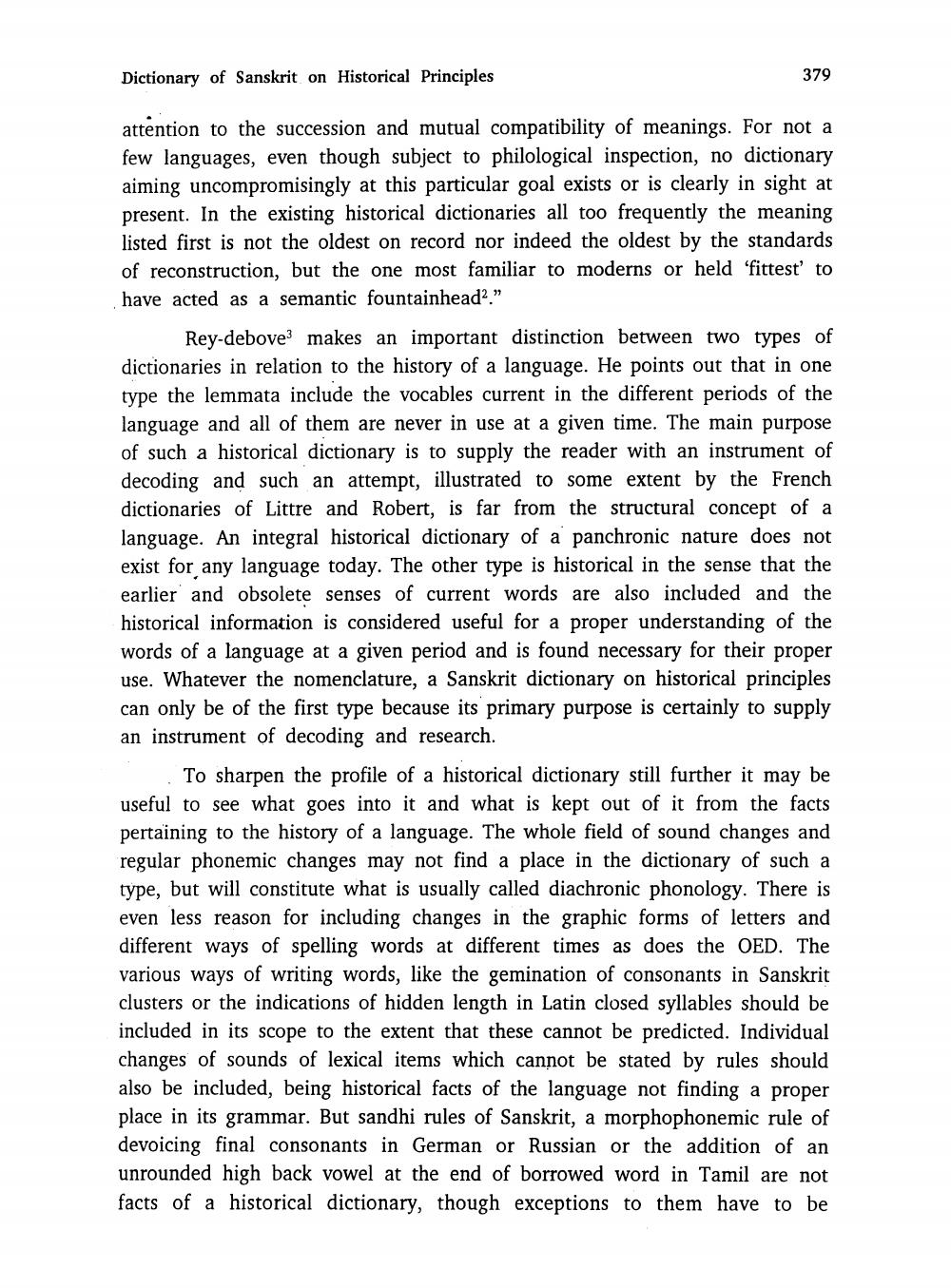________________
Dictionary of Sanskrit on Historical Principles
379
attention to the succession and mutual compatibility of meanings. For not a few languages, even though subject to philological inspection, no dictionary aiming uncompromisingly at this particular goal exists or is clearly in sight at present. In the existing historical dictionaries all too frequently the meaning listed first is not the oldest on record nor indeed the oldest by the standards of reconstruction, but the one most familiar to moderns or held 'fittest' to have acted as a semantic fountainhead."
Rey-debove makes an important distinction between two types of dictionaries in relation to the history of a language. He points out that in one type the lemmata include the vocables current in the different periods of the language and all of them are never in use at a given time. The main purpose of such a historical dictionary is to supply the reader with an instrument of decoding and such an attempt, illustrated to some extent by the French dictionaries of Littre and Robert, is far from the structural concept of a language. An integral historical dictionary of a panchronic nature does not exist for any language today. The other type is historical in the sense that the earlier and obsolete senses of current words are also included and the historical information is considered useful for a proper understanding of the words of a language at a given period and is found necessary for their proper use. Whatever the nomenclature, a Sanskrit dictionary on historical principles can only be of the first type because its primary purpose is certainly to supply an instrument of decoding and research.
To sharpen the profile of a historical dictionary still further it may be useful to see what goes into it and what is kept out of it from the facts pertaining to the history of a language. The whole field of sound changes and regular phonemic changes may not find a place in the dictionary of such a type, but will constitute what is usually called diachronic phonology. There is even less reason for including changes in the graphic forms of letters and different ways of spelling words at different times as does the OED. The various ways of writing words, like the gemination of consonants in Sanskrit clusters or the indications of hidden length in Latin closed syllables should be included in its scope to the extent that these cannot be predicted. Individual changes of sounds of lexical items which cannot be stated by rules should also be included, being historical facts of the language not finding a proper place in its grammar. But sandhi rules of Sanskrit, a morphophonemic rule of devoicing final consonants in German or Russian or the addition of an unrounded high back vowel at the end of borrowed word in Tamil are not facts of a historical dictionary, though exceptions to them have to be




